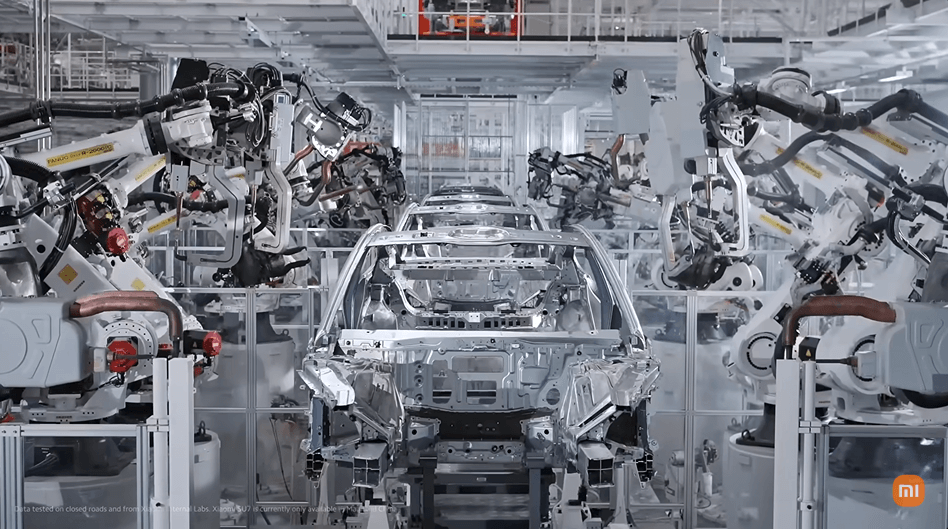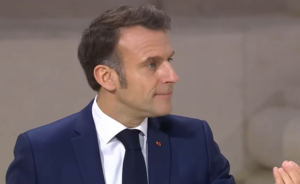Europe’s car industry is facing challenges, while China is leading the way in the battery sector. Sanderson’s “Volt Rush” illustrates how the West has fallen behind in the race for raw materials.
The European automotive sector is currently facing its most severe crisis to date. Under the influence of Trump 2.0, trade policy is poised to transform into a geoeconomic battleground. Simultaneously, the EU is navigating its complex relationship with China—will it lean towards cooperation, competition, or confrontation? In the meantime, the situation in Congo is intensifying.
Just as bronze, iron, coal, and oil once defined their times, lithium is poised to take center stage in our current era. In Volt Rush, Henry Sanderson explores the intriguing history of electromobility and the emergence of the battery age. It is undoubtedly quite engaging, particularly given the author’s lively writing approach. Moreover, having a strong inclination for contemporary advocacy seems to be an asset for those aiming to succeed in the raw materials industry. The exploration of resource-abundant nations, prominent personalities, and industrial heritage is consequently filled with compelling stories.
The era of renewable energy, along with the significance of critical raw materials, is poised to be just as influenced by geopolitical factors as the oil era was. Industrial policy encompasses a broader spectrum, yet it is fundamentally reliant on raw materials; without them, any industrial strategy holds no weight. As a result, society is pushing the limits of mining to unprecedented levels of intensity. Sanderson references economist Jeffrey Bernstein, who asserts that a one percent growth in the economy results in a two percent rise in mining activities.
An examination of the value chains reveals the significant shifts in the economic balance of power that will occur due to the transition towards climate neutrality. The prospect of a battery-driven ecological future is, at present, inconceivable without the involvement of China. This situation represents a significant setback for Europe from the standpoint of industrial policy. However, it also reveals a shortcoming in achieving the intended strategic independence. The management of the complete value chain stands as Europe’s most significant vulnerability. From a European, particularly a German, viewpoint, it is thus a difficult read. The West has been in a state of slumber. For Sanderson, it is clear: neglecting research and development in batteries was a monumental error.
Industrial success typically hinges on two key advancements: the first in research and development and the second in scaling operations. China effectively oversees both aspects through clean technology. This allowed for multiple objectives to be achieved simultaneously. Internally, the focus was on enhancing the cleanliness of its own cities and decreasing reliance on foreign nations, particularly in terms of oil supply. Externally, the allure of prestige and the increasing shares of the global market for future technologies were undeniably enticing. The historical connection between dominance in new technologies and national strength and power is well established. The transformation in the automobile industry presented China with a unique opportunity, which was promptly embraced. The analysis reveals a troubling truth: the collaboration with German automotive manufacturers, in particular, played a significant role in this matter. The implementation of rigorous standards and an ongoing series of evaluations has significantly advanced technology in China. Undoubtedly beneficial, without a doubt: harsh protectionism. The necessity for locally produced cars to utilize local batteries has been a pivotal factor in their success.
The book reveals the extensive system of subsidies that facilitated China’s ascent. The evidence indicates that the Chinese approach was unique and highly expensive, making it difficult to replicate. Simultaneously, it is evident that challenges persist in China as well, with numerous ventures encountering failure. The book challenges the prevalent narrative in the West that suggests a comprehensive Chinese master plan. Despite facing challenges, China has successfully reached its objective: establishing market supremacy in an increasing array of emerging technologies.

A crucial factor for success: China leads across the entire value chain. The nation lacks substantial reserves of several essential raw materials. However, it has assumed control over the processing procedure. Firms such as CATL have strategically acquired mines or stakes in them, ensuring their access to essential raw materials. In contrast, Europe holds a minimal stake in the production of cobalt, nickel, lithium, and graphite; the scenario deteriorates further regarding the subsequent processing into intermediate products.
In light of this, one must consider: What actions should Europe take in response? What are the best ways to structure a fruitful partnership between the government and businesses? In developed nations, the connections between commerce and governance are considerably looser compared to those in China. While governments may ink various memorandums of understanding, the critical elements—investments, collaboration, technology transfer, and local production facilities—are predominantly controlled by private enterprises. These primarily aim to achieve economic objectives. They prioritize the interests of their shareholders over the broader macroeconomic or security policy concerns of their governments.
Indeed, private enterprises frequently lead the way in innovation in the Chinese battery and automotive sectors. However, the Chinese government provides its resource-rich partner nations with infrastructure funded by the state. Corporations play a significant role in shaping the agreements forged between nations. Financial backing from institutions like the Export-Import Bank and the Chinese Development Bank plays a crucial role. Europe is in dire need of solutions to effectively merge state and private sector interests while ensuring adequate financial incentives and security are established.
Europe is undoubtedly confronting two significant challenges in this context. Addressing the ongoing crisis in the automotive sector is crucial to prevent significant repercussions on the entire supply chain and to safeguard numerous jobs from being at risk. However, it is imperative to take proactive measures and spearhead innovation, especially in the field of battery development. Sanderson poses this inquiry as well. Innovative battery technologies utilizing alternative, less contentious raw materials than cobalt may indeed represent the most viable solution moving forward. However, in this regard, China often leads the way. Without increased collaborative research and development efforts in Europe, it is unlikely to succeed.
Recycling merits consideration as well. The production of batteries leads to waste generation; however, the value of this material reaches into the millions. In contrast to fossil fuels, metals possess the remarkable ability to be recycled repeatedly, maintaining their functionality throughout the process. The current trajectory of advancement towards a circular economy has been notably sluggish. Every year, approximately 50 million tons of electronic waste are discarded, with a mere 20 percent being recycled. The levels of minerals found in electronic waste significantly surpass those present in natural environments. The estimated value of the scrap stands at a staggering 57 billion US dollars.
For regions with limited access to raw materials through mining, such as Europe, this aspect is particularly noteworthy. Europe must recognize the rising influence of China in advancing the circular economy as a significant alert for action. The Chinese lithium company Ganfeng exemplifies a comprehensive approach by integrating the entire process from mining to the finished product. The initiative is now focused on repurposing old lithium-ion batteries into fresh raw materials while also exploring innovative materials that could enable rapid charging for vehicles. If the Chinese maintain their lead in this area, they will solidify their position of power.
One of Sanderson’s significant accomplishments is to dispel certain misconceptions. Two chapters focus on the Congo. In 2019, Chinese companies like Huayou were responsible for processing 90 percent of the cobalt sourced from the Congo. Sanderson highlights the challenges involved in pinpointing the source of specific raw materials within these intricate products. Chinese battery firms and their Western partners were concerned about potential backlash from consumers, prompting them to seek out alternatives.
As investors and buyers consistently highlight this global pressure, a troubling question emerges: will these factors influence future decisions in light of the ongoing significant assault on social and environmental standards in the USA and Europe? The continent of Europe is deeply invested in establishing CO2 limits alongside maintaining robust social and environmental standards. The established Chinese companies are poised to gain significantly from a more laissez-faire approach, which is evident. Europe’s edge in the global arena may very well lie in its commitment to lower emissions. Approximately 40 percent of the emissions generated during the production of an electric vehicle can be linked to the battery. China’s manufacturing sector is responsible for approximately 60 percent higher emissions, largely attributed to its heavy reliance on coal. Nevertheless, it is essential to consider the host in conjunction with the producing countries.
To address the challenges associated with cobalt sourced from the Congo, there has been an increased reliance on nickel from Indonesia. This shift has been bolstered by significant investments from Chinese firms in smelting and stainless steel facilities in the region. In his book, Sanderson highlights companies that remain largely unfamiliar to Western audiences yet wield remarkable market influence. One notable instance is Tsingshan, which has significantly transformed global competition in the steel market over the past ten years. The company’s market share in stainless steel production increased significantly, climbing from five percent in 2009 to an impressive 25 percent a decade later. Traveling to Indonesia was pivotal in the journey toward achieving dominance in the global steel market. The government found this arrangement beneficial, as it aimed to encourage domestic processing and subsequently advance its own industrialization efforts.
In this context, one encounters what are believed to be established European truths. Western governments claim that China focuses solely on exporting raw materials, yet they suggest that China is more attuned to the interests of its partners. The case of Tsingshan illustrates that one might be perilously misguided in this regard. Initially, nations in the Global South, especially those with abundant resources, strive to establish the terms independently. Navigating this in the future will pose significant challenges. What is required here are appealing proposals rather than messages that frequently come across as haughty and criteria that are viewed as exclusionary. Furthermore, concerning China, the situation is being handled with excessive leniency. Chinese companies demonstrate remarkable agility, often adjusting seamlessly to the regulatory environments of their partner nations. In certain instances, they gain advantages from enhanced market power and regional value chains, as illustrated by the case of Indonesia. In 2022, the Indonesian government implemented an export ban on nickel ore, significantly impacting the already challenged Western producers. The ban further enhanced Tsingshan’s position, enabling them to leverage their market influence in Indonesia to dictate pricing strategies. The company has secured a leading role in the electric vehicle sector, driven by the increasing demand for nickel.
These examples position Volt Rush as an essential read, particularly amid the ongoing discussions surrounding the future of vital European industries and the global competition for competitiveness.
The author Claudia Detsch leads the FES Competence Center for Climate and Social Justice, located in Brussels.










+ There are no comments
Add yours